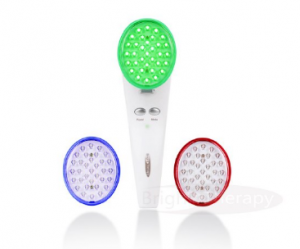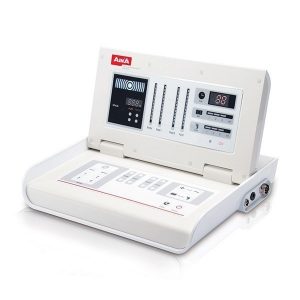What Is Red Light Therapy?
Red light therapy is a form of light that that uses red LED infrared lighting and bulbs to treat a wide array of conditions and disorders.
Red Light Therapy is commonly associated with anti-aging. Skin Rejuvination, to be exact. And while this is true, Red Light Therapy can works wonders in that department, the treatment has a long list of benefits. Ranging from acne to chronic back pain, Red Light Therapy may be the new magical elixir…except this actually works.
Uses For Red Light Therapy:
- Wrinkles
- Skin rejuvenation
- Age spots
- Acne
- Sun damage
- Chronic pain
- Joint pain
- Muscle pain
- Bites
- Bruises
- Minor burns
- Collagen production
- Cuts
- Scrapes
- Dry skin
- First aid
- Hair loss
- Psoriasis
- Red marks from acne
- Stretch marks
- Rosacea
- Flushing
- Scars
- Wound care
- Uneven skintone
Red Light Therapy For Skin…
Red Light Therapy devices can be used to help slow down our natural cosmetic aging. Treatment can reduce fine lines and wrinkles while also tightening and firming the skin. Proper treatment can rid of age spots and hyper pigmentation, which usually occurs on the face, neck, and hands. There’s no need for face lifts when you can go the natural route. Red Light Therapy can also diminish blemishes and red spots, along with acne. Thought you could never get rid of those blackheads around your nose? Or those zits that keep showing up around your chin? How about those scars that acne left you with? Regularly scheduled treatment can help you say goodbye to those.
How Does It Work?
Red light therapy uses infrared light which delivers a burst of energy to the body’s tissues and triggers a response for the body to heal itself from the inside. Depending on the affected area and what your body needs, the burst of energy will trigger different responses from your body and kickstart the necessary healing process. This form of light therapy is much better than laser technology because it doesn’t cut the body’s tissues! It’s also much safer and effective than the sun’s rays because it has no harmful UV components. It’s a win win.
Red light therapy effectively treats the skin in a few different forms. When it comes to anti-aging, wrinkles, and sun damage, the treatment is wonderful. Red light therapy produces elastin and collagen which prevents skin aging. It also increases circulation by relaxing the blood vessels in the specific treatment areas which allows blood to flow more easily. This helps to prevent and diminish wrinkles because increased circulation encourages the production of new skin cells. Can you believe that? There’s actually a safe and effective way to say goodbye to wrinkles.
As for treating and getting rid of acne, red light therapy is an extremely popular form of treatment. Facing Acne, a website dedicated to helping people get the clear skin they desire, wrote a wonderful article explaining light therapy and it’s effects on acne. They wrote a brief summary on how red light therapy can treat acne. The website explains,
“Red light reaches deep into the skin and activates hemoglobin. Red light treatment cuts off just enough of the blood supply of oil-producing sebaceous glands that pores don’t get quite as oily. Blue light penetrates pores and kills acne bacteria—but not all the pore’s acne bacteria. There are always some acne bacteria in the sebaceous gland that can’t be reached by blue light.” (FacingAcne.com)
Commitment…
It’s important to understand that any form of therapy requires commitment. In order to receive the best possible results from red light therapy, patients must stick to a set schedule, even if they are conducting the therapy by themselves in their own home.
Are You Sold?
There are many different devices used for red light therapy treatments. From wands, lamps, bulbs, beds, pads, and masks, there is surely a device for everyone in need. As discussed, the lights penetrate into the skin, boosting the cellular process that your body is in need of. However, you need the right device in order to begin your healing. Red light therapy uses wavelengths of light between about 620 nanometers and 700 nanometers. At home devices are typically between 630 to 660 nanometers.
Treatment sessions can be done at home or in a doctor’s office. Treatment sessions range depending on the devices being used. Handheld wands and masks are usually held to the skin from as little as 30 seconds to 15 minutes. Tanning style beds are typically used between 10 to 30 minutes. Bulbs that are inserted into lamps can be stood in front of, set up above your place of need, etc., and are typically used for the same amount of time as the bed.

LED Light Therapy Skin System For Beautiful Skin
Amazon for $99.99
The LED Light Therapy Skin System for Beautiful Skin uses multiple forms of light therapy to target skin conditions. As you’ll see, this device is at a slightly higher price point. The reason being, you get more for your buck. This skin care package includes three detachable light heads which can be changed according to what your skin requires. The device is hand held, cordless when in use and charges with the included cord. The device is aimed to give you a 30 minute treatment per charge and has a built in timer to let you know when your treatments, which are typically 10 minutes long, are finished. The LED Light Therapy Skin Care System has wonderful reviews for not only treating acne. It can also tighten the skin on your face and body and reduce fine lines and wrinkles.


